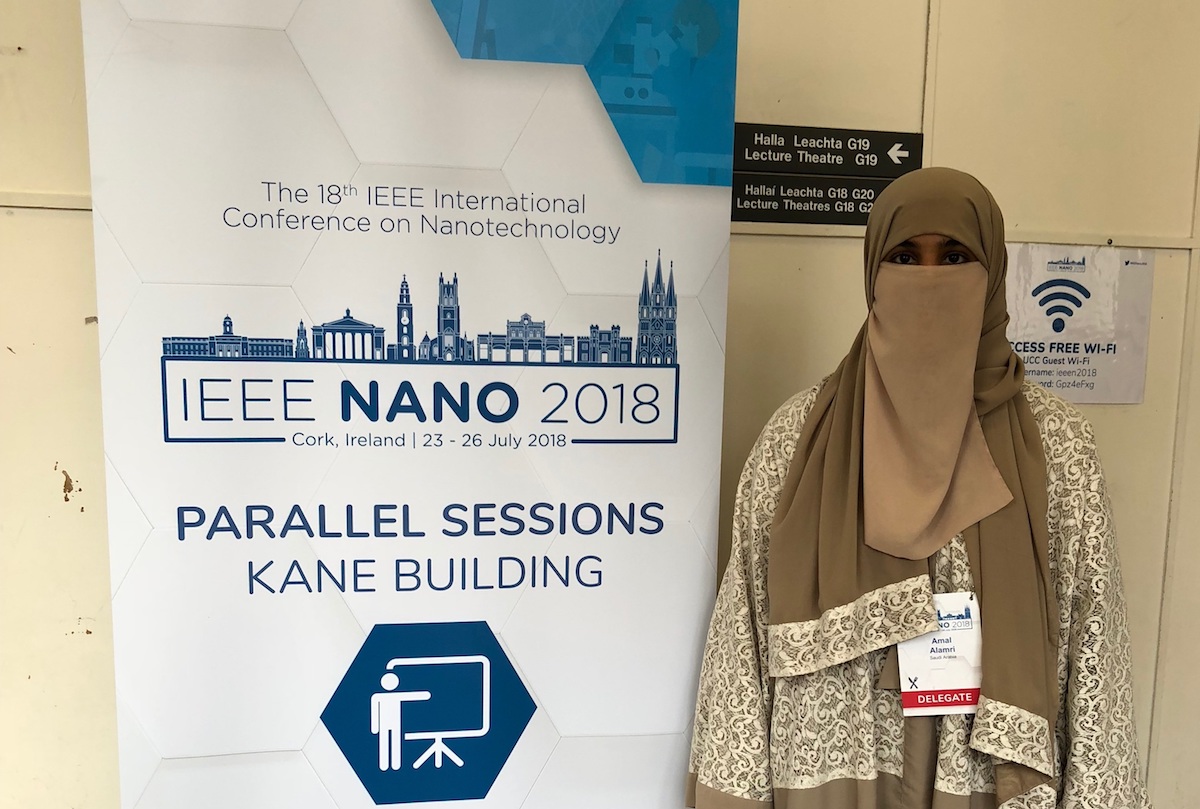Ph.D. student Amal Mohammed Alamri finalist in nanoArt Competition

Ph.D. student Amal Mohammed Alamri was selected as a finalist in the July 2018 IEEE nanoArt Competition, part of the 18th IEEE International Conference on Nanotechnology. Alamri is shown here on the KAUST campus. File photo.
-By Tanya Petersen, KAUST News
KAUST Ph.D. student Amal Mohammed Alamri, who works in the University's Nano Energy Lab under the guidance of Associate Professor Jr-Hau He, was selected as a finalist in the July 2018 IEEE nanoArt Competition in Cork, Ireland. The competition was part of the 18th IEEE International Conference on Nanotechnology (IEEE NANO 2018) in Cork, which took place from July 23 to 26, 2018.
As a finalist, Alamri's work was displayed in a three-day exhibition at University College Cork and in Cork's Crawford/CIT Gallery.
Alamri's IEEE Nano paper entitled "Photonic Single Crystal Heterostructures based on Perovskites/Molybdenum disulfide" was also accepted for presentation at the 2018 conference.

An example of KAUST Ph.D. student Amal Mohammed Alamri's nanotechnology work is shown here. Image courtesy of Amal Mohammed Alamri.
"It was a golden opportunity to participate as a speaker at IEEE NANO 2018 and a great plus that my image was displayed as a finalist in the nanoArt Competition," Alamri said. "It demonstrates a new way of stacking the n-type MoS2 single crystal with p-type perovskite CH3NH3PbBr3 single crystal in the vertical direction, enabling us to p–n diode."

KAUST Ph.D. student Amal Mohammed Alamri attended the July 2018 18th IEEE International Conference on Nanotechnology in Ireland. Photo courtesy of Amal Mohammed Alamri.
"2D materials and perovskites have attracted extensive research interest in recent years because of their excellent optical-electronic properties. The main objective of our project is to develop printed photodetectors with flexible, thin and transparent features. These could be used in several electronic applications, such as [in] visible light communication or [in] bio-medical equipment," she explained.
"Through my solar energy research, I want to engineer a product from start to finish that can assist us in our daily lives," Alamri noted.
Related stories:
- KAUST postdoctoral fellow wins Sylvia Esterby Presentation Award
-
KAUST Associate Professor Salim Al-Babili receives Bill & Melinda Gates Foundation grant
-
KAUST faculty members receive the King Prize for Honoring Inventors and the Gifted
-
KAUST Professor Husam Alshareef wins Kuwait Prize

